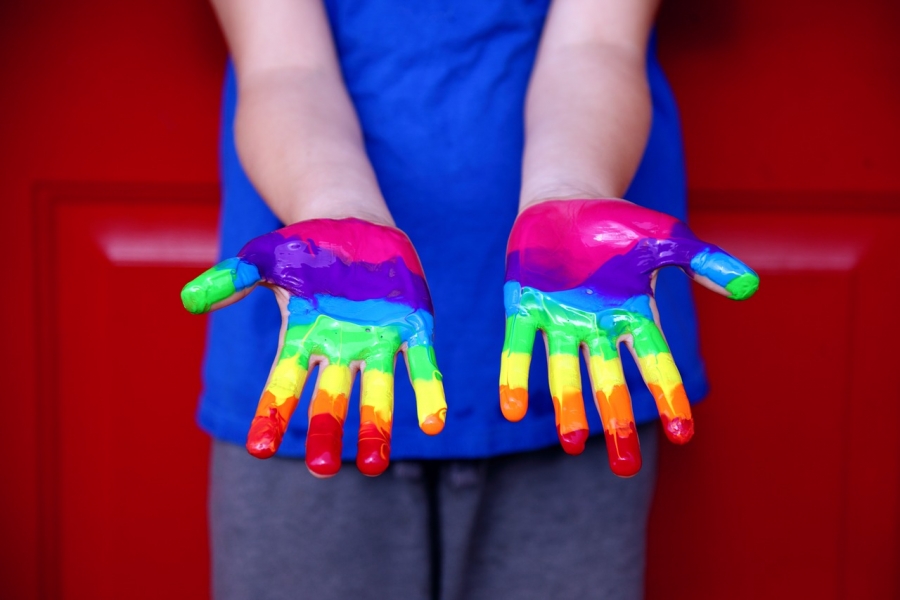Schools are well-known for their openness and celebration of diversity when it comes to students, but some LGBT teachers still feel isolated and uncomfortable to talk openly about their sexuality. Schools are heteronormative workplaces and being a person who is not ‘straight’ requires some careful navigation. Headteachers and school leaders have a responsibility to sustain a school environment that welcomes diversity, supports equality, and defends all staff, including those who identify as LGBT. If you are a school leader who identifies as heterosexual, or is not part of a minority group, you are less likely to notice the exclusion or the discrimination that may be happening in your school.
As an LGBT teacher and a gay man, I have been subjected to abuse and discrimination throughout my life for loving someone of the same sex. Even though government legislation has strengthened over the last few years, there is still a long way to go. As an LGBT teacher, I am hyper vigilant and cautious about who I ‘come out’ to. This feeling of uncertainty is because being straight is the preferred and presumed sexuality. Choosing to ‘come out’ to students, families and colleagues is fearful, as you do not know their opinions and beliefs when it comes to the LGBT community. Making your school LGBT+ friendly must begin with small, deliberate steps. We must acknowledge that this will not happen overnight, but with thoughtful planning and strong leadership, a school can improve its culture of inclusivity for everyone.
When making cultural change in your school, it is important to avoid tokenism. It is superficial to teach diversity for a week or a month as a bolt on to your curriculum, when that is the only time you discuss LGBT rights or teach how to be anti-racist. All members of your school community are needed to make real change, deliberately walking the walk, instead of just talking the talk.
Below are my five top tips for making your school LGBT+ friendly:
1. Use Inclusive Language
Making small changes around inclusive language can have a huge impact on either making people feel accepted and/or feeling excluded.
Here are my suggestions:
- Instead of greeting your staff team or students with, ‘Good morning ladies and gentlemen, boys and girls’, say, ‘Good morning everyone’. With this, you have included all genders and identities without assuming everyone identifies with the gender they were assigned at birth.
- Challenge students and colleagues who continue to use phrases that diminish showing emotion or acting like a particular gender. For example: ‘man-up’, ‘you throw like a girl’, and ‘boys don’t cry’.
- Stop organising students into boys’ teams and girls’ teams, find different ways.
- Avoid reinforcing gender stereotypes.
2. An LGBT+ friendly school is everyone's responsibility
- It is a mistake to think that creating an LGBT+ friendly school should solely be the responsibility of the ‘gay teacher’. It should be a collective responsibility. Headteachers, senior leadership teams, teachers and the rest of the school community should be actively working together to promote an inclusive and diverse environment, ensuring all members of staff and students feel safe and can be their authentic selves.
- CPD and INSET days could involve external speakers, offering your staff a refreshing voice and a different perspective.
- LGBT+ people experience the world differently to their heterosexual counterparts, and school leaders should give them a safe space to talk about their experiences, with the support of their LGBT allies.
3. Be Proud of LGBT Visibility
If you are showing a prospective same sex family around your school, or a LGBT teacher comes for an interview, or a new student who may identify as LGBT or does not know their sexuality, how do they know that this school or future workplace is a safe and inclusive environment where they can be their authentic self?
Here are some suggestions:
- Give teachers a choice to wear LGBT badges/pins or have LGBT lanyards
- Display the Pride flag inside and outside your school. There are many flags here that represent the LGBT+ community.
- Displays. Show your visitors that you celebrate inclusion and diversity. Have displays celebrating LGBT stories and issues.
- Encourage LGBT+ teachers to make a network or support group where they can talk about LGBT issues and use this to show that LGBT+ voices matter.
- Have your senior leadership team and staff go on a learning walk, where the focus is LGBT inclusion. Can you see it represented in your school?
4. Have an inclusive and diverse curriculum
Your curriculum should be well planned and deliberately tailored to minority groups and should not be left to chance. To avoid tokenism, these practices should be carefully planned and seen across all subject areas.
Here are some suggestions:
- Children’s story books should include and promote different family dynamics, including same sex couples, single parents, foster parents, disabled children and parents, families of colour, families of different religions. Here are some ideas.
- In mathematics, have word problems that are inclusive of same sex families. Instead of Mrs. Smith or John, have names that come from a range of countries and heritages.
- In your presentations, ensure that the pictures you use show a range of minority groups.
- In your humanities curriculum, teach about colonisation, the impact of imperialism, and celebrate indigenous communities and customs. See here for more about decolonising your school curriculum.
- Diversify your set texts, offer a range of authors, not just white, heterosexual men.
5. Educate Yourself
I believe the best way to learn more about the LGBT community is to educate yourself, have an open mind and be comfortable with being challenged. I feel there can sometimes be a fear about people who do not belong to a certain minority group, making a mistake or unconsciously offending someone, or using a term or acronym that is outdated.
Here are my suggestions:
Read books and use organisations that specifically discuss LGBT voices in education and whole school approaches:
- Catherine Lee’s ‘Courage in The Classroom. LGBT Teachers share their stories’.
- Shaun Dellenty’s ‘Celebrating Difference. A Whole School Approach to LGBT+ inclusion’.
- Andrew Moffat’s book series for the No Outsiders programme.
- These organisations offer a plethora of teaching resources: Schools Out, Stonewall Education, Mermaids UK, LGBT Ed, and The LGBT Primary Hub.
The LGBT Primary Hub offers a snappy timeline of our history and glossary of LGBT vocabulary.
![]() Looking for resources to support your teaching online? Check out our unique list of the best free online resources on the independent review platform EdTech Impact.
Looking for resources to support your teaching online? Check out our unique list of the best free online resources on the independent review platform EdTech Impact.


















